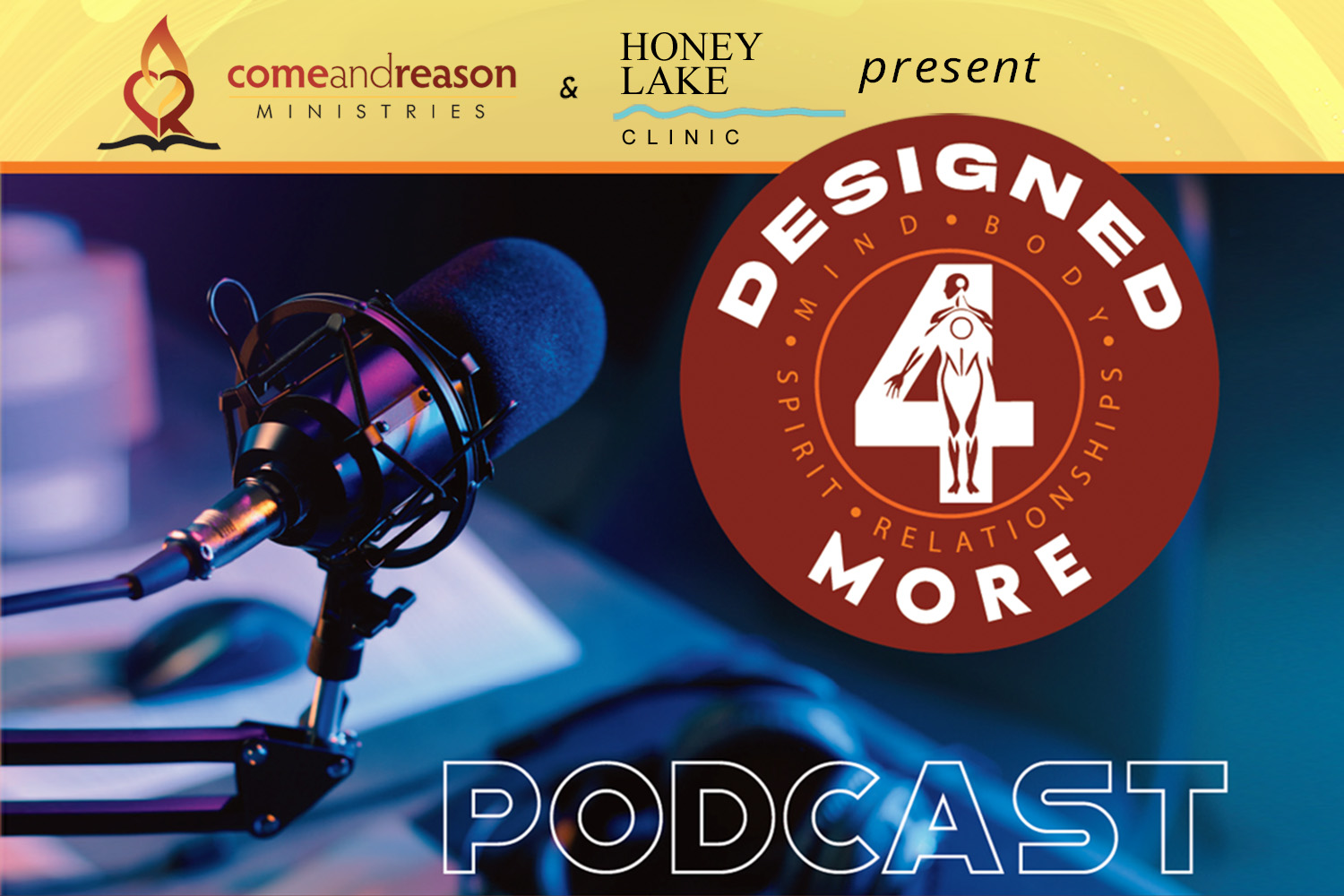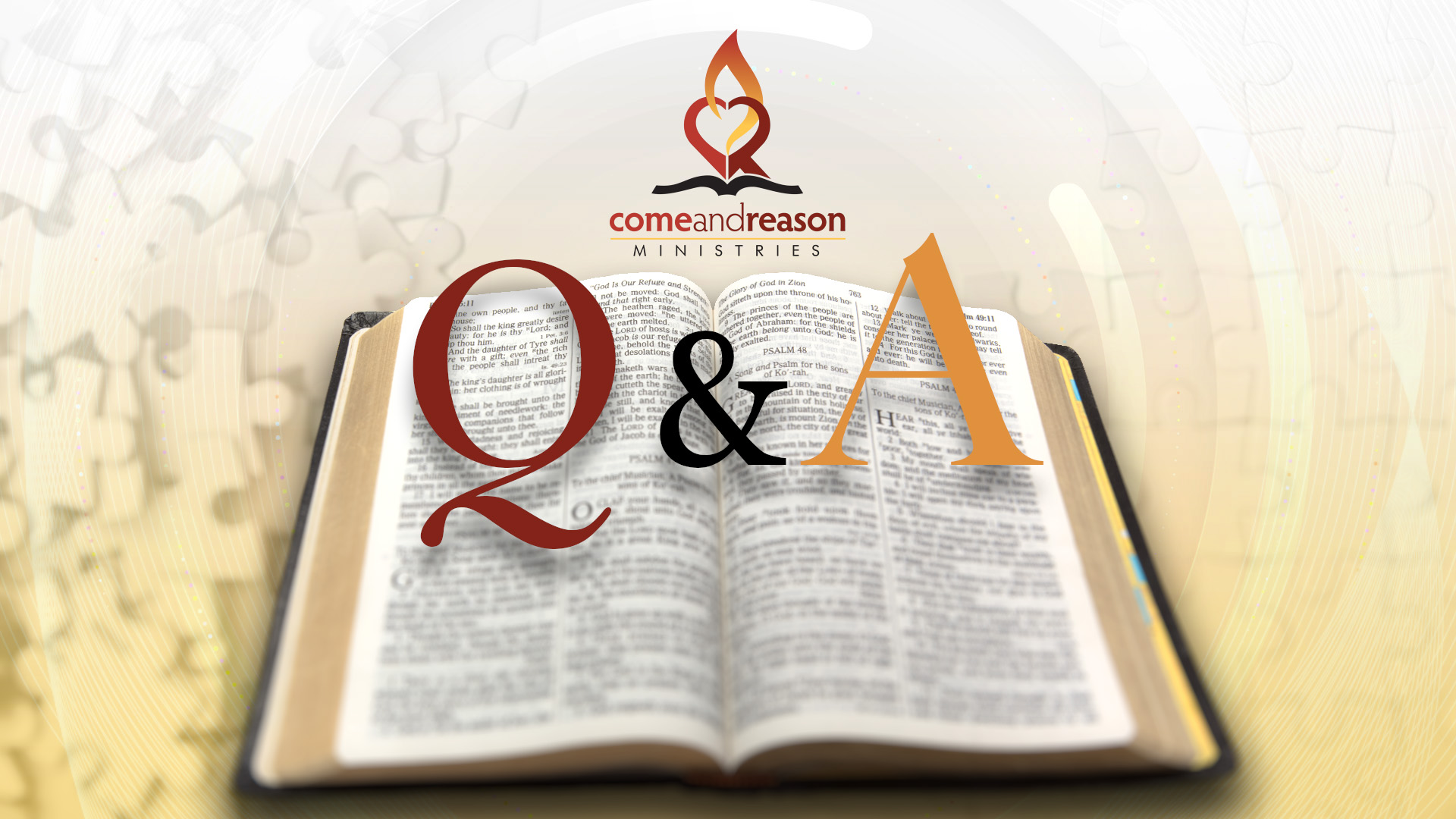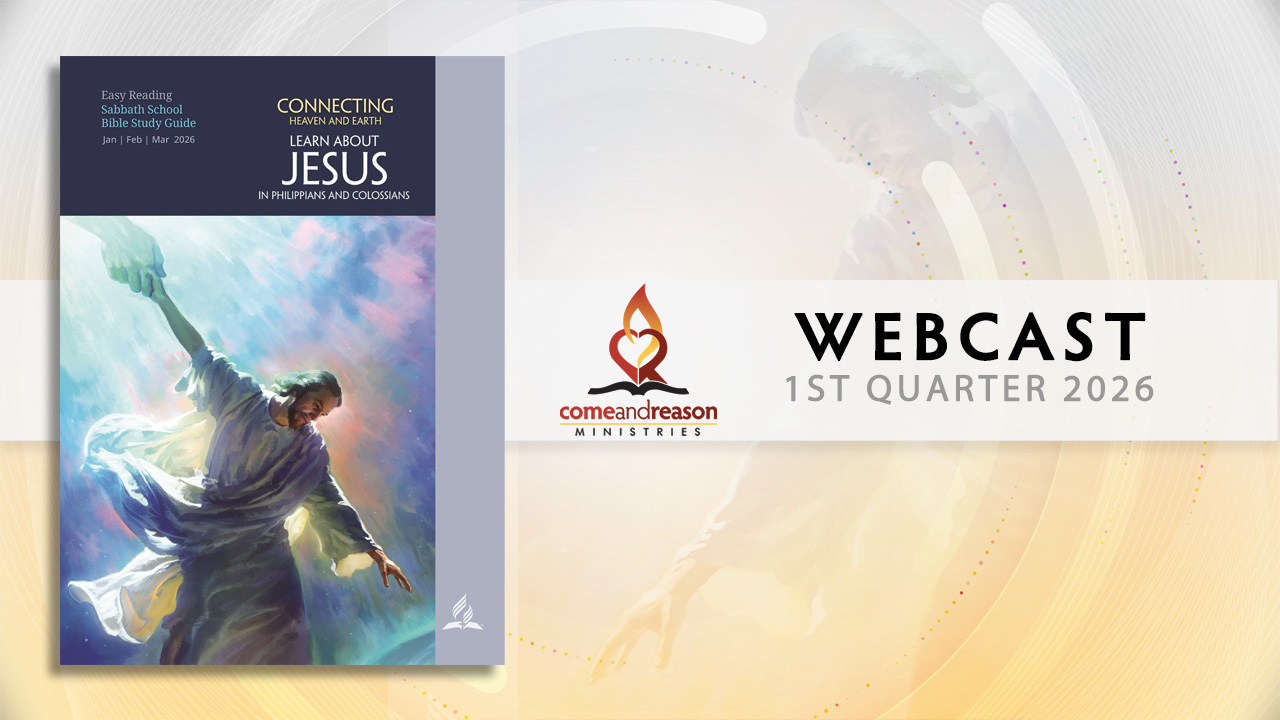Recently, a kind Seventh-day Adventist gentleman, whom I have known for many years and who disagrees with our Healing Model of salvation, began an email conversation with me. Our exchange has produced some useful dialogue, which I believe will be helpful to share.
He expressed concern that the Healing Model presents only the subjective views of the atonement, while the Legal Model presents both objective and subjective views. Then he gave examples of subjective and objective:
- God in Christ reconciling a world of enemies to Himself is objective. Every sinner reconciling himself to God is subjective.
- Joshua the High Priest as a brand plucked from the fire is subjective. The world of sinners as a brand plucked from the fire is objective.
- A divine forgiveness for all sin is objective. A sinner personally experiencing that forgiveness is subjective.
My response: Regarding the objective and subjective aspects of the atonement, the Healing Model teaches that both subjective and objective elements are required for a sinner to be saved.
We define ŌĆ£objectiveŌĆØ to be what God has done, irrespective of human response, for the salvation of humankind; and subjective to be our response to what God has done.
Regardless of any individual human response (subjective), the species human was saved (objective) in the person of Jesus Christ, who became fully human and lived sinlessly. Because Jesus was fully human, incarnate as part of the humanity descended from Adam, and His sinless personhood was tempted in every way like we are, but was without sin (Hebrews 4:15), He put the species right with God. Jesus restored the species, in His humanity, to righteousness, freeing it from sin. All other human beings are saved based on their faith in Him, not by their works. Our faith does not save us; our faith is the means whereby we partake of what Christ has objectively achieved for us.
The gentleman followed up with several other questions:
- Does the Healing Model teach that Christ did not die the second death on the cross?
- Does the Healing Model teach that the initial act of sin is not the thing that needed fixing?
- Does the Healing Model teach that Christ on the cross did not bear the world’s sins (everyoneŌĆÖs individual acts throughout all human history)?
- The Healing Model emphasizes manŌĆÖs sinfulness, or condition of sin. Is this equivalent to our carnal, sinful, fallen nature?
What follows below is my strategy for dealing with those who struggle with understanding the Healing Model, interlaced with my specific response to the gentleman. I share it with you as steps you can take when you face similar discussions.
Step 1: Define the landscape of the conversation. The overarching landscape that sets the stage is how one understands GodŌĆÖs law. This must be decided before the specific questions can be answered.
My response: These are all excellent questions, and I have detailed answers for them. But they are subordinate questions, and the answers to them become self-evident once the primary questions are answered. If we donŌĆÖt first answer the primary questions accurately, then these secondary questions all end up with misleading or incomplete answers.
What are the primary questions?
What is the problem that sin caused that the plan of salvation is designed to fix? In other words, we need to rightly understand the problem before we can correctly understand the solution. The atonement is the heart of the solutionŌĆöbut what is the problem? Sin? Okay, absolutelyŌĆöbut what is sin? Transgression of the law? Okay, absolutelyŌĆöbut what law? GodŌĆÖs law? Of course, absolutely true, but how does GodŌĆÖs law functionŌĆöwhat kind of law is it? This is the heart of the origin of sin in heaven; altering the view of GodŌĆÖs law is how sin began in heaven, and it will end over the same issue.
Step 2: Give references recognized as valid by the party with whom you are dialoguing. The following are quotations from E.G. White, one of the founders of the Adventist Church and one whom many believe had special, Spirit-led insight into the plan of salvation. These references are useful in making the case regarding how law is understood especially when dialoguing with Adventists.
The last great conflict between truth and error is but the final struggle of the long-standing controversy concerning the law of God. Upon this battle we are now entering,ŌĆöa battle between the laws of men and the precepts of Jehovah, between the religion of the Bible and the religion of fable and tradition (The Great Controversy, 582).
There is no such thing as weakening or strengthening the law of Jehovah. As it has been, so it is. It always has been, and always will be holy, just, and good, complete in itself. It cannot be repealed or changed. To ŌĆ£honorŌĆØ or ŌĆ£dishonorŌĆØ it is but the speech of men.
Between the laws of men and the precepts of Jehovah will come the last great conflict of the controversy between truth and error. Upon this battle we are now enteringŌĆöa battle not between rival churches contending for the supremacy, but between the religion of the Bible and the religions of fable and tradition (Prophets and Kings, 625).
But in heaven, service is not rendered in the spirit of legality. When Satan rebelled against the law of Jehovah, the thought that there was a law came to the angels almost as an awakening to something unthought of (Thoughts from the Mount of Blessing, 109).
My response in addition to the quotations: What kind of law cannot be weakened or strengthened, has always been, and will always be, and is in force but unthought of? None other than the design laws upon which reality is built to exist!
Imposed rules, which humans make, which require external enforcement, must be posted; humans and angels must be informed or instructed about made-up laws in order to hold them accountable. But not so with design law.
Consider when Isaac Newton told his friends that he had discovered the law of gravity; canŌĆÖt you hear them saying, ŌĆ£A law? Really? Wow, I never thought there was a law about gravity; itŌĆÖs just how things work.ŌĆØ
But in heaven, Satan introduced a lie about the concept of law. He introduced the idea that the law is not design protocols for life and health and happiness, but merely a system of rules that if broken will require God to inflict punishment:
In the opening of the great controversy, Satan had declared that the law of God could not be obeyed, that justice was inconsistent with mercy, and that, should the law be broken, it would be impossible for the sinner to be pardoned. Every sin must meet its punishment, urged Satan; and if God should remit the punishment of sin, He would not be a God of truth and justice. (The Desire of Ages, 761).
Step 3: Bring the discussion to a decision point that demarcates the landscape for future dialogue and conclusions. If we cannot agree that GodŌĆÖs law is design law, then the subordinate questions will all be misunderstood. No matter what explanation I give, they will be rejected because they wonŌĆÖt make sense if the imposed law view is assumed to be true.
Step 4: You can leave it there and allow time for the primary questions to be considered and answered. In an in-person conversation, I would likely do that, but in an email exchange with someone who will think things through carefully, then you can make some further applications of the design-law understanding to the questions asked.
For instance, in my response, I asked: What is the problem that sin caused that the plan of salvation is designed to fix? Let me ask it again another way: When Adam and Eve sinned, did God get changed? Of course not! Did GodŌĆÖs law get changed? Of course not! Did the actual condition of Adam and Eve change? YesŌĆöthey became sinners; they were not still sinless, holy beings with love and trust operating in their hearts but who were now in legal trouble with God. The image of God within them was damaged, love was displaced, and fear and selfishness now ruled in their hearts.
So, if the change that sin caused was not in God, does the atonement (solution) need to do something to God? Does the atonement need to do something to GodŌĆÖs law? Or does the atonement need to have its power, action, impact within humanity? This is why Jesus had to become humanŌĆöbecause it was in humanity that Jesus had to do His saving work; He did that work as a human.
Design law informs us that GodŌĆÖs law is the basis of life. Sin transgresses that law and takes one out of harmony with God and life; without the atonement, the result of sin is ruin and death:
ŌĆ£The wages of sin is deathŌĆØ (Romans 6:23 NIV84).
ŌĆ£Sin, when it is full-grown, gives birth to deathŌĆØ (James 1:15 NIV84).
ŌĆ£The one who sows to please his sinful nature, from that nature will reap destructionŌĆØ (Galatians 6:8 NIV84).
God acted through Christ to save sinners by eradicating sin from human beings and restoring human beings to at-one-ment with Him. How? By upholding, sustaining, restoring, and living out His law in the humanity of Jesus; by doing this, the law of life (love) destroyed the law of sin and deathŌĆöthe cause of death. As Scripture says:
ŌĆ£Since the children have flesh and blood, he too shared in their humanity so that by his death he might destroy him who holds the power of deathŌĆöthat is, the devilŌĆØ (Hebrews 2:14 NIV84).
ŌĆ£But it has now been revealed through the appearing of our Savior, Christ Jesus, who has destroyed death and has brought life and immortality to light through the gospelŌĆØ (2 Timothy 1:10 NIV84).
So, Christ destroyed death and brought life and immortality to lightŌĆöthis is by restoring GodŌĆÖs living law into the humanity He assumed by the action of His human self. Incredible!
We, by faith, receive that gift, that victory within us that heals and transforms us:
ŌĆ£I have been crucified with Christ and I no longer live, but Christ lives in me. The life I live in the body, I live by faith in the Son of God, who loved me and gave himself for meŌĆØ (Galatians 2:20 NIV84)
ŌĆ£We have the mind of ChristŌĆØ (1 Corinthians 2:16 NIV84)
ŌĆ£This is the covenant I will make with the house of Israel after that time, declares the Lord. I will put my laws in their minds and write them on their heartsŌĆØ (Hebrews 8:10 NIV84).
ŌĆ£You may become partakers of the divine natureŌĆØ (2 Peter 1:4 NET).
Step 5: Challenge them to apply the design-law perspective to their questions.
My response: Consider your questions through design law and see if the answers donŌĆÖt become self-evident. I will give an insight on the second death question: DonŌĆÖt assume the meaning of the term. Go to Scripture and let the inspired record define what the second death is. If you do that, and apply the description rather than the term ŌĆ£second death,ŌĆØ do you believe that Christ died the second death? If you would like to see my answer, you can read my blog at Did Christ Die the Second Death?
Step 6: Give them a problem that causes cognitive dissonance. Say something that doesnŌĆÖt fit their paradigm and that they will have a hard time ignoring (using an authority the other person values will make it more difficult for them to ignore the question).
My response: You asked, ŌĆ£Does the Healing Model teach that the initial act of sin is not the thing that needed fixing?ŌĆØ
This question is confusing to me. The initial sin was not an act so much as a change in attitude when Lucifer stopped being loving and became filled with pride, changing from loyal love to selfishness that led to acts of rebellion; the sin was not the acts themselves but the selfishness that grew in his heart. The focus on acts suggests to me that sin is being viewed through the human-law model. Further confusion for me about your question comes from awareness of E.G. WhiteŌĆÖs statement in The Great Controversy about the initial sin of Lucifer:
God in His great mercy bore long with Lucifer. He was not immediately degraded from his exalted station when he first indulged the spirit of discontent, nor even when he began to present his false claims before the loyal angels. Long was he retained in heaven. Again and again he was offered pardon on condition of repentance and submission ŌĆ” if he had been willing to return to God, acknowledging the Creator’s wisdom, and satisfied to fill the place appointed him in God’s great plan, he would have been reinstated in his office (495).
Notice, Lucifer is bearing false witness in heaven, yet he is offered pardon on the condition of repentance and submission without any legal paymentŌĆöno sin bearer, no death penaltyŌĆöand he would have been reinstated if he would have repented. The design-law understanding brings harmony to all these statements, but the legal model contradicts these statements insisting a death penalty must be inflicted upon a ŌĆ£sin-bearerŌĆØ in order for pardon to be extended.
So, when in dialogue with interested parties who struggle to correctly understand the Healing Model, consider using these steps in presenting the truth to them. Be sure to present this truth in love and in patience, giving them room to grow and adapt to ever-unfolding truth, just as we all are doing every day!











 using your credit or debit card (no PayPal account needed, unless you want to set up a monthly, recurring payment).
using your credit or debit card (no PayPal account needed, unless you want to set up a monthly, recurring payment). instead?
instead?